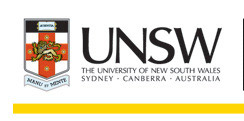Balancing wealth creation and wealth distribution is the Australian way.
By Tim Harcourt*
The Hawke-Keating Labor Government was one of the most successful governments of the western world. It was also Australian Labor’s most successful federal government in the post-war period by a country mile.
Whilst Thatcherism and Reaganism are often held up by conservatives as exemplary administrations, the same could be said of Hawke-Keating, not just in Australia but around the world.
In fact, the Hawke-Keating economic performance was superior to anything that high deficit ‘trickledown’ economics from Reagan or that Margaret Thatcher could conjure up in her long years of UK Conservative rule.
For instance, if we compare Hawke versus Thatcher, the economic record speaks for itself.
In terms of GDP, Australia outperforms Britain in 12 out of the 18 years compared since Mrs Thatcher begins her term. In terms of inflation, Australia had a lower inflation rate than Britain for 9 out of the 18 years. In terms of the labour market, the UK unemployment rate was 6.5 percentage points higher than Australia, with a higher proportion of long term unemployed people in the UK than Australia for every year of comparison.
Australian Labor’s success at a time of prevailing Conservative tide in the Anglo-American world did not go unnoticed. In fact future British Labor Prime Ministers Tony Blair and Gordon Brown whilst in Opposition were so impressed with Australia that they regularly visited our wide brown land to rejuvenate the intellectual capital and future policy agenda of ‘New Labour’ in the UK before winning office in 1997 and enjoying a long period of successful government initially under Tony Blair’s ‘Third Way’ banner.
As Paul Keating said in an interview with me: “I said to Tony Blair, our way was not the third way, but the only way”. In fact, in some ways selling “The Third Way” in Australia has been like trying to sell “The Joy of Sex”. To quote Paul Keating: “We were more interested in doing it than finding a label for it.”
Tony Blair’s ‘Third way’ program for modernisation, was provided with a successful model in the Hawke-Keating government – one of the few successful social democratic governments that survived a political and intellectual era dominated by the right in most industrialised democracies.
But it wasn’t the third way that Tony Blair followed it was the Australian way.
One of the great lessons of this historically successful period of Labor government of 1983-96 was the balance struck between the wealth creators and wealth distributors. To govern successfully and continually, Labor needs both to function in tandem. Prime Ministers Hawke and Keating knew this, the business leaders knew this and the Australia Council of Trade Unions (ACTU), so ably led by Bill Kelty knew this through the forging of the successful Prices and Incomes Accords.
Bob Hawke knew the importance of encouraging businesses to invest through stable macroeconomic conditions, wage restraint and employment creation. Hawke could build consensus with business whilst ensuring workers received improvements through the social wage with Medicare, Education and Skills development and tax cuts.
Paul Keating, the son of a boiler maker – turned entrepreneur, knew that financial markets needed to be conducive to growth and regional expansion. His own Bankstown based father had been knocked back for a loan from an established bank when wanting to expand to Malaysia, so as Treasurer Keating democratised finance so all Australians could embrace the opportunities of the coming Asian Century.
Bill Kelty, not only forged the Accords with both Hawke and Keating, but also created the Australian superannuation policy framework that has become the envy of the world. In a stroke of genius, as union membership fell in the 1980s, the workers instead became owners of capital in the 1990s through the industry super funds. The workers took control of the commanding heights of capitalism – that are now jointly managed by employer representatives – and provided pools of savings for sustainable investment. It has taken the conservatives a long time to realise what has happened – hence their issues with highly competitive industry funds in today’s financial system and their tendency to prop up rivals to the industry funds.
However, in today’s Australia, there is a polarising of our political economy. Some on the right with large mining and media interests want to create wealth but don’t want to redistribute it. Sometimes it seems they would prefer an oligarch friendly government protecting their vested interests. They are suspicious of trade unions, NGOs, environmental and consumer groups and sometimes it seems democratic government itself.
On the other hand, some on the left want to redistribute wealth but have no interest in how it is created. They want to ban mining but at the same time claim they have the tax revenue from the resources industries to spend. They are suspicious of business and entrepreneurs in general. They have no interest in economic policy.
But the Australian polity should not be a battle between wealth creators and wealth distributors as the Hawke-Keating-Kelty reform period shows you need both to function effectively as an economy and as a society.
In essence, a growing economy allows you to pay for a national disability scheme, for superannuation, Medicare, better occupational health and safety, and it enables you to take better care of the environment.
A growing economy with high employment, high wages and rising living standards helps improve productivity and competitiveness.
Growth and employment creation is not about mean industrial relations laws like Workchoices.
It is not about destroying the environment.
It is not about locking generations out of quality education and employment.
It is not about attacking the contribution of our newest Australians nor the culture of our oldest Australians, our indigenous people.
Growth and employment depends both on wealth creation and wealth distribution.
It is Labor that combines the best of the right to ‘have a go’ by our entrepreneurs and the right to a ‘fair go’ for workers, middle income and low income families.
Bob Hawke, Paul Keating and Bill Kelty knew the value of Labor supporting both the growth creators and growth distributors.
In this historic ballot for the Australian Labor Party – one of the oldest political parties in the democratic world – Labor is not electing just an Opposition leader in this ballot, nor someone to be solely popular in inner city branches and amongst rusted on activists.
Labor is electing a future Prime Minister. Someone who understands the Australian way and the need to balance wealth creators with wealth distributors.
Bob Hawke Paul Keating and Bill Kelty knew this in their successful run of Labor Government.
Party members need to think about the lessons of the Hawke-Keating-Kelty legacy and how it applies to today’s Australia when then they think about their decision. Balancing wealth creation with wealth distribution to enable good economic policy to benefit all of society is the key lesson of that successful period.
It’s the Labor way. It’s the Australian way. It’s the only way to return Labor to Government.
*Tim Harcourt was ACTU Research Officer/Advocate during the Hawke Keating Government and has been an economic advisor to several Federal Labor Cabinet Ministers and Two Labor Premiers. He has also worked as Chief Economist of Austrade and at the Reserve Bank of Australia and in the private sector in Australia and internationally and currently at UNSW. His grandfather was an adviser to the Curtin-Chifley Labor Government of1941-49. These views are his private views and not the views of any of the institutions he is associated with, past or present.













No Comments so far ↓
Comments are closed.